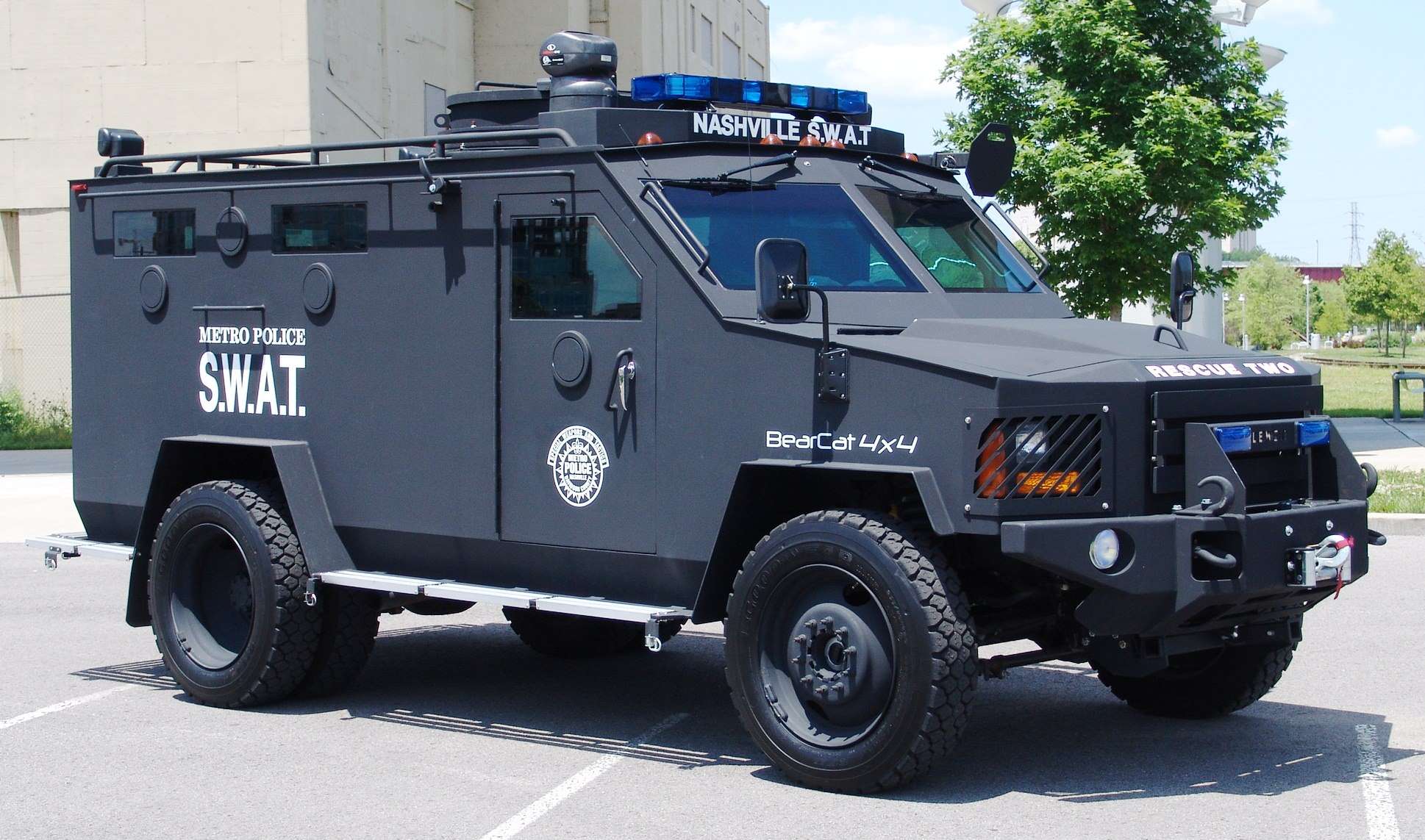Police Requests for Military Gear Are Not About Fighting Terrorism
Mother Jones reveals hundreds of documents detailing local PDs requests for "combat style weapons, trucks, and armor" from the Pentagon.
Mother Jones' Molly Redden has revealed more than 450 requests by police departments to the

Pentagon's "1033 program," which over the past two decades has distributed more than five and a half billion dollars of surplus military gear, vehicles and weaponry to local PDs.
As U.S. involvement in the wars in Iraq and Afghanistan continue to wind down, the federal government has been left with a glut of weapons and equipment, and many police departments want to get their hands on as much of it as they can.
What is striking about Mother Jones' analysis of the requests is that they rarely focus on using the gear to defend against terrorism, mass shooters, or hostage sieges. Instead, when it comes to requesting a mine resistant ambush protected vehicle (MRAP), "the single most common reason agencies requested (an MRAP) was to combat drugs."
Expressing a dire need for their small towns to possess the same weaponized armored vehicles used to storm Fallujah, law enforcement enumerated reasons such as maintaining a "presence" at Ohio State football games and patrolling Delaware beach towns during the summer. To underscore the continually blurred lines between the military and police, a Florida sheriff's department requested a vehicle capable of carrying enough "troops" necessary to serve search warrants.
Among the requests for militarized equipment to be used on threats unrelated to terrorism:
Law enforcement agencies claimed they needed MRAPs to safeguard trailer parks,shopping malls, theme parks, Halloween festivals, and Lambeau Field.
Redden concedes some requests were not so outlandish:
But for every bizarre request, there were legitimate-seeming claims of true danger. A few agencies noted that they had recovered high-powered weapons in raids or claimed run-ins with heavily armed cartel members. Some sheriffs were distressed about white supremacy groups and sovereign citizens. A police chief in Centralia, Washington, without giving specifics, said an armored vehicle had once saved his life. Many agencies argued that they couldn't pay for an armored vehicle any other way.
Still, the preponderance of requests had little or nothing to do with addressing situations that SWAT teams were originally conceived to deal with:
Out of the total 465 requests, only 8 percent mention the possibility of a barricaded gunman. For hostage situations, the number is 7 percent, for active shooters, 6 percent. Only a handful mentioned downed officers or the possibility of terrorism.
Redden quotes Peter Kraska of Eastern Kentucky University as saying:
This is a great example of how police as an institution talk to each other privately, versus how they talk to the public and journalists who might raise questions about what they're doing with this equipment.
It should come as no surprise that the war on drugs is the main rationale for the rise in militarized police, as the 1033 program was born of drug prohibition. The New York Times recalls:
Congress created the program in the 1990s as a way to help the police fight drug crime and violence. After 9/11, as the military ramped up to fight two wars, the program grew in the name of fighting terrorism. Lately, police departments big and small have been outfitting themselves with aircraft, night-vision goggles and trucks built to survive buried roadside bombs.
Mother Jones' commendable work in uncovering the raw data illuminating the bureaucratic path which sends instruments of war from the Middle East to Middle America is worth a thorough look.
You can check out all 467 police department's pleas to the Pentagon for surplus military equipment here.


Show Comments (113)